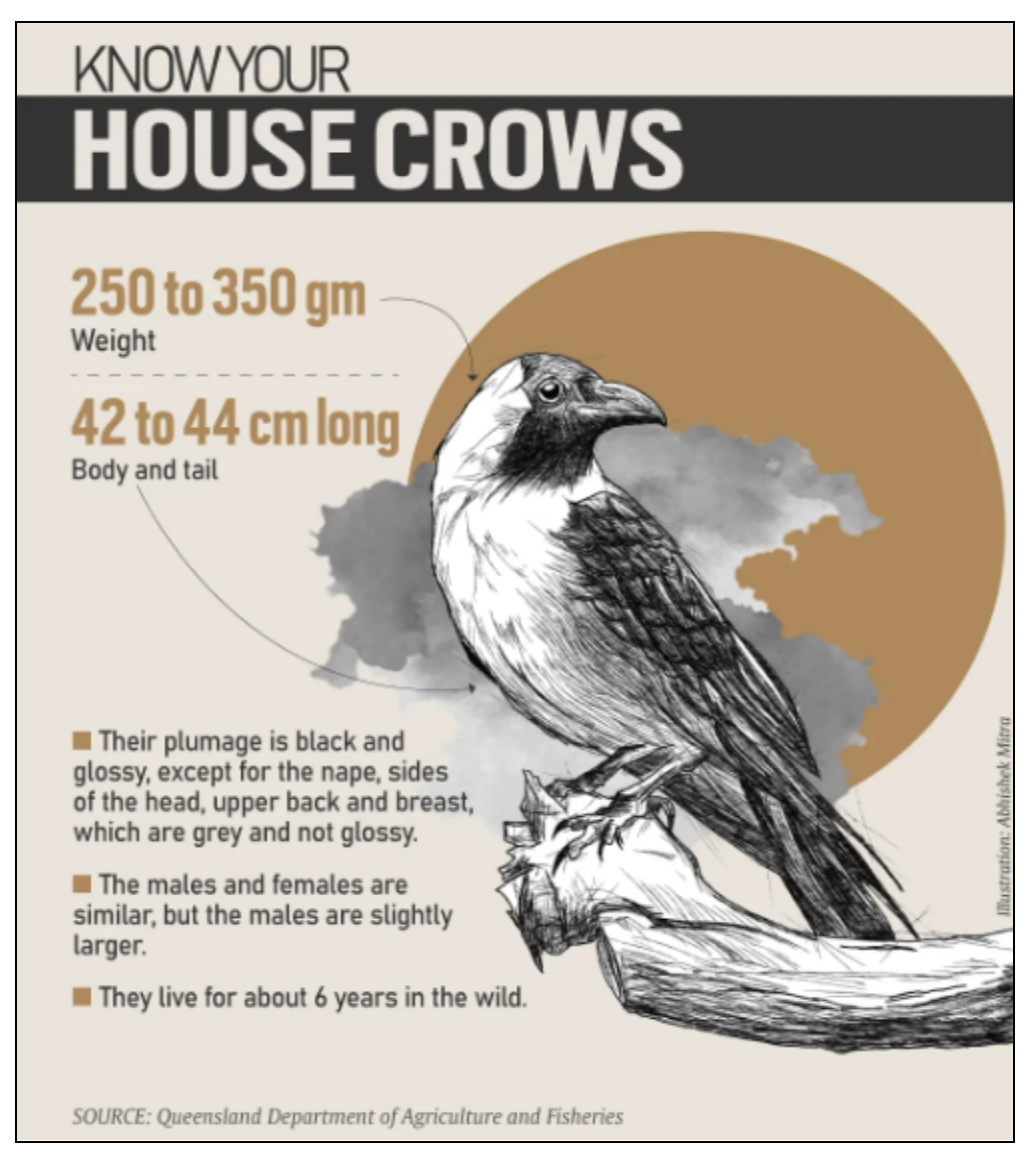News Expert:
The Indian house crows known for stealing food from tourists, displacing native bird species, and raiding crops, have prompted the Kenyan government to declare war on them.

Government's Bold Plan
- The Kenya Wildlife Service announced their intention to tackle the invasive house crows.
- They described the birds as a public nuisance and a major inconvenience to the hotel industry along the coast.
- The service, in collaboration with various stakeholders, has developed an action plan to eliminate the crows by the end of 2024.
- The plan is to eliminate one million house crows by December 31, 2024.
The strategy
- It involves using starlicide, an avicide imported from New Zealand.
- Experts estimate that 5-10 kilograms of the poison, costing $6,000 per kilogram, will be needed to kill one million house crows.
- The poison will be mixed with meat offcuts from the hotel industry and offered to the birds.
Impact on Local Ecosystems and Communities
- The proliferation of the Indian house crow (Corvus splendens) has significantly impacted local ecosystems in Kenya and other East African countries.
- These crows are aggressive predators, known to attack indigenous birds, kill them, and consume their eggs.
- Their teamwork in raiding nests has displaced several native bird species, including scaly babblers, pied crows, sunbirds, weaver birds, and waxbills.
- The crows are also a threat to livestock and agriculture. They have been known to kill newborn or sick calves and goats, and they prey on small reptiles, amphibians, mammals, and insects.
- The crows' raids on fruit trees and crops such as wheat, maize, millet, rice, and sunflowers result in significant losses.
- The hospitality industry suffers too, as crows frequent lawns and hotels in search of food, creating a mess and disturbing tourists with their incessant cawing.
- Their nests in air conditioning units and around swimming pools further exacerbate the problem.
Historical Context and Population Explosion
- The Indian house crow is native to India and other parts of Asia and the Middle East. They were introduced to East Africa in the 1890s, likely via ships from the Indian subcontinent or by sailors who kept them as pets.
- The crows' population quickly exploded, leading Zanzibar to declare them pests by 1917 and offer bounties for their elimination.
- Despite these efforts, the crows spread throughout the region, reaching Kenya by 1947.
- Today, the population in Kenya is estimated to be between 750,000 and 1 million.
About Indian House Crow
- They are highly intelligent birds, capable of remembering faces, using tools, and communicating in sophisticated ways.
- Their adaptability to new environments, flexibility in diet, and lack of significant predators have contributed to their rapid population growth in East Africa.

Past and Present Culling Efforts
- Kenya has attempted to control the house crow population before. From the 1980s to 2005, a low-level culling operation using poison was in place.
- However, the initiative was halted in 2005 due to the poison not being imported through official channels and insufficient government involvement.
- The current plan is more structured, with government permits to import starlicide and an approved protocol for its use.
- Poisoning is considered the most effective method, as shooting or trapping the intelligent crows proves difficult.
- The strategy ensures that the crows consume the poison in the morning and die at their roost sites in the evening, without associating the feeding site with danger.
- Starlicide is also safe, as it is fully metabolized by the crows before they die, reducing the risk of secondary poisoning to other species that may feed on the dead birds.
Conclusion:
Kenya's culling plan is being watched by other countries dealing with invasive house crow populations, including Yemen, Singapore, and some European nations.The success of this initiative could provide a model for managing and controlling the spread of these disruptive birds in other regions.


